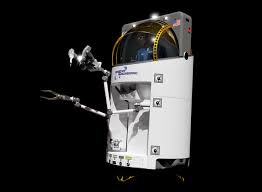
Breaking News
 Food Banks All Over The U.S. Are Being Overwhelmed By A Tsunami Of Hungry People
Food Banks All Over The U.S. Are Being Overwhelmed By A Tsunami Of Hungry People
 Kids' Online Safety Laws Could Dig a Graveyard for Speech and Privacy
Kids' Online Safety Laws Could Dig a Graveyard for Speech and Privacy
 The Only REAL Solution to Digital ID - #SolutionsWatch
The Only REAL Solution to Digital ID - #SolutionsWatch
Top Tech News
 Japan just injected artificial blood into a human. No blood type needed. No refrigeration.
Japan just injected artificial blood into a human. No blood type needed. No refrigeration.
 The 6 Best LLM Tools To Run Models Locally
The 6 Best LLM Tools To Run Models Locally
 Testing My First Sodium-Ion Solar Battery
Testing My First Sodium-Ion Solar Battery
 A man once paralyzed from the waist down now stands on his own, not with machines or wires,...
A man once paralyzed from the waist down now stands on his own, not with machines or wires,...
 Review: Thumb-sized thermal camera turns your phone into a smart tool
Review: Thumb-sized thermal camera turns your phone into a smart tool
 Army To Bring Nuclear Microreactors To Its Bases By 2028
Army To Bring Nuclear Microreactors To Its Bases By 2028
 Nissan Says It's On Track For Solid-State Batteries That Double EV Range By 2028
Nissan Says It's On Track For Solid-State Batteries That Double EV Range By 2028
 Carbon based computers that run on iron
Carbon based computers that run on iron
 Russia flies strategic cruise missile propelled by a nuclear engine
Russia flies strategic cruise missile propelled by a nuclear engine
 100% Free AC & Heat from SOLAR! Airspool Mini Split AC from Santan Solar | Unboxing & Install
100% Free AC & Heat from SOLAR! Airspool Mini Split AC from Santan Solar | Unboxing & Install
Innovative Single-Person Spacecraft Design Passes Leak Test (Exclusive)

A spacecraft designed to eventually replace many spacewalking astronaut activities passed two key pressure tests in September, representatives from the company building the spacecraft told Space.com in an exclusive interview.
The spacecraft concept from Maryland-based Genesis Engineering Solutions is just big enough for one person; an astronaut would float inside the spacecraft for several hours and use robotic arms to manipulate equipment. Propulsive thrusters would allow the spacecraft to nestle close to a target, similar to NASA's Manned Maneuvering Unit jetpack that was briefly tested on astronaut spacesuits in the 1980s.
Instead of using a bulky spacesuit to do repairs on NASA's future Lunar Orbital Platform-Gateway space station, for example, the Genesis spacecraft operator could use the robotic arms while remaining in relative comfort inside of an enclosed cockpit. [Take a Look Inside Lockheed Martin's Proposed Lunar 'Gateway Habitat for Astronauts]
But long before it flies in space, the Genesis spacecraft must pass several key tests on the ground.

 "Refusal to Disclose"
"Refusal to Disclose"


